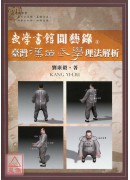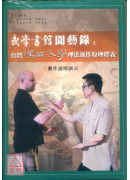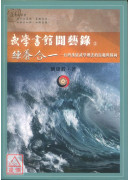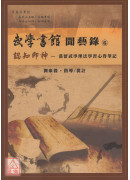
桃園市龜山區復興二路6號1樓 Tel: (03)328-8833 E-mail: service@ncc.com.tw LINE: @nccs
本網站由 瀛睿律師事務所 擔任常年法律顧問





蓋未有天地先有理,理為氣之陰陽主宰,主宰理已有天地,道在其中。因明理而悟法,乃辨法而制變,所謂理法者,及原理法則之謂也。
「葉天士、王孟英溫病大家,只有經驗,不知原理。自從王叔和誤解《內經》經文錯起,以致後人將傷寒溫病麻疹,完全學錯,枉死甚多,不解和故」(彭子益.《原運動的古中醫學》)
學派是同一學科領域中,由於學術觀點不同,或有獨特學說,而形成的派別。學派的背後,有個內涵做為依據,稱之為理法,而理法則本於吾人之認知。
傳統武術的未來,將是學派與門派共治的時代。《武學書館聞藝錄②》闡述的主題是「武學理法發微」,長遠的目標,是為中國武術的「學派」催生,彌補傳統武術在進化的過程中「群體外在」(肯恩.威爾伯四象限論)的不足,希冀有助於解決當前傳承所面臨的困境與未來的發展。
李序
知道《武學書館聞藝錄②武學理法發微》面世急電康毅先生以特快專遞寄來。無他,先睹為快!讀了「聞藝錄①」意猶未盡,應了一句廣東俗語:「到喉唔到肺」。總覺得還欠缺了一些更深入的內容,我預知康毅先生還有「話說」,果然!
坊間各門各派武術書籍琳瑯滿目,稱得上百花齊放、百家爭鳴。然多流於老套,源流、英雄史、套路、技法,不一而足,即使有拳理論述,不是簡淺就是故作高深,鮮有談及理法,此即「只有經驗,不知原理」之弊病。
理法是中華傳統武學承傳的基石,要在武學達到較高的境界,就必須重視理法,所謂:「要得扶桑,非舟莫適。」這是歷代先賢們所公認的必由之路。捨此別無他途。康毅先生說:「祖師因明理而悟法,乃辨法而制變,所謂理法者,即原理法則之謂也。」此亦名家苦苦追求、探索的奧秘,是入道之津梁,閥山之斧。
中華傳統武學頑強的生命力,因為它適應性強,每個時代都能在其中找到適應和適變的內涵。很多時候看起來似乎已被理沒了,但它精神不泯,根深柢固,這就是康毅先生說的:「……在肢體的背後所穩藏積澱的文化意涵,才是世代相傳中屢斷屢續不絕於今的不可說之秘。」,所謂不可說之秘,就是武學中的理法。
康毅先生對中華傳統武學有一份不可尋常的熱愛和執著,「武學理法發微」一書是他對武學理法進行了系統、全面的梳理、論証,體系完整準確,思路清晰客觀,分析縝密嚴謹,是一本難能可貴,不可多得的經典之作。本書的出版對中華傳統武學的發展和傳承必將起著深遠積極的意義。我從本書得到的啟示之一是要想真正練好鶴法,想怕窮畢生精力也未必能如願以償!
我衷心地的向有心探索武學真諦、追求武學文化意涵的朋友推荐本書,是為序。
壬辰年 臘月
芙蓉 李剛 序於香江聽濤樓
Preface
In my journey on the martial arts path over the last few decades, I have come across many masters and teachers. I have humbly followed a few teachers in my quest for some degree of competence in the skills and prowess of the Wing Chun and Taichi systems, amongst others. Understandably, I have also looked into and studied copious number of magazine articles and books on the subject matter.
In recent years, we have also witnessed a surge of online uploads in video clips and electronic articles and snaps in the martial arts fields. We also noticed a never before experienced openness and objectivity by so many masters and teachers on the practical how-to and underpinning theoretical foundation involved. So, it is no longer a trend for those with the skills and power to cling onto their secrets. Instead, many of these high achievers seem anxious and eager to tell the world what they know and show others how to achieve what they managed to achieve as well.
This is truly a golden age for the aficionados hoping to up the ante on their martial arts pursuit. Knowledge as information comes across so openly, so quickly, so usably and more importantly, so inexpensively. Within this context, on my latest visit to Taipei, I come Master Liu Kangyi′s latest work on martial theoretical methods.
Master Liu′s book is a culmination of his decades long research and study with numerous authorities in the field in Mainland China, HongKong, Macau and Taiwar. His dedicated efforts in the field meant also an exhaustive and exhausting probing, study, analysis and experimentation of very ancient texts and contents. I know because on my numerous encounters with Master Liu over the last 10 years I also have a convincing number of introductions to his private collection of rare and precious texts on Chinese martial arts, some dating back more than a 100 years ago.
Knowledge unless practical is useless. In my opinion, this practicality should also be simple, scientific, sensible and safe to take up and use.
Master Liu′s book meets all these criteria.
Now, I am not one who easily nor readily endorse the work of anybody let alone writing a preface on it but Master Liu′s book is one that I imagine no serious martial artist worth his salt can do without on his bookshelf. Not only can Master Liu write but he actually can convincingly show what he writes to be the truth. When Master Liu showed me the immense power of his non-style system of martial theoretical method, I was literally blown away. At his age, without the physical muscles to back him up, it is almost impossible for him to generate so much power. Yet, he did. I was sold. I immediately bought 8 copies to give to my closest martial arts friends. I also asked Master Liu to quickly translate this book into English, so that the rest of the martial arts community in the world can benefit from his discovery
What made the content so special is that it is like a Holy Grail on martial arts power that we can so easily, so quickly and so inexpensively integrate and incorporate into whatever we are doing. In one fell stroke, in far lesser time, you actually can do what took many others previously so much longer and cost them so much more.
Internal arts enthusiasts will find the details in Master Liu′s book, extremely relevant and practical. Master Liu′s martial theoretical method is very revealing on some of the finest internal arts theory available to date. Taichi students and practitioners can relate to it so practically without abandoning their classical studies. Those doing Pakua and Hsing-I may finally come to understand the intricacies of what they do. As for Wing Chun practitioners, I can speak as one, this book may finally unlock the mystery of power you so eagerly seek for over the years. At the cost of a humble meal today, you suddenly may find yourself possessing the knowhow kept hidden and reserved for initiates in yesteryears.
This book, Master Liu assured me, is only the beginning Times like this, you wish you came across this work in your younger years, instead of decades later. Then again, it is like wishing you had internet and all the latest gadgetries decades ago. Why not take advantage of it now and enjoy what it can offer to you in your martial arts endeavour.
For those who are not physically muscular, young, and energetic, yet still hoping to reach some milestone in your martial arts ambition, this book may the turning point.
For my friend Cambridge who came with me to Taipei last month, a Hsing-I fan, an Aikido Nidan, an ex-Taichi Chief Instructor, and a Wing Chun practitioner, Master Liu′s martial theoretical method is the missing dynamic, he searched long and hard for. After one, yes, one lesson and a few weeks of practice later, I found myself, the receiving end of a new found power he previously never displayed.
For him at least, he has entered the portal to a new world. His excitement, gratitude and joy, only martial artists will understand. I believe the whole martial arts community will now be the better for Master Liu′s work I thoroughly recommend his work to all my martial arts friends and will share it with all my students. I suggest you get yourself a copy and wait for the English edition to come as well.
Acton Victor Leow(廖炫珏)
Facilitator of the VIKOGA program
Sydney
Dated this 19th day of February in the year 2013
自序——武術學派的前奏曲
《武學書館聞藝錄②》闡述的主題是「武學理法發微」,長遠的宗旨,是為中國武術的「學派」催生,同時迎接學派與門派共治時代的來臨。
「學派」指的是:同一學科領域中,由於學術觀點不同,或有獨特學說,而形成的派別。學派的背後,必須有個內涵作為依據才能具體成形,稱之為理法,理法的根源則本於武者心目中對於武術的「認知」。
傳統武術一直以來都是以經驗法則做為傳承的形式和傳授的內容,風險不低,勉強走到二十一世紀的今日,也不免要處處掣肘。武術門派上承文化之法統,下繫萬千習武者之寄託,由於人為因素主導過盛,一旦時空環境轉換或所傳非人,就不免與江湖利害有所牽扯,遭人垢病。
被老中醫李可先生譽為「中醫復興之父」,繼醫聖張仲景之後第二位醫中聖人的清末民初中醫學家彭子益在《圓運動的古中醫學》中提到:
葉天士、王孟英溫病大家,只有經驗,不知原理。自從王叔和誤解《內經》經文錯起,以致後人將傷寒溫病麻疹,完全學錯,枉死甚多,不解何故。
此語批判極其嚴厲,語重心長,同時也指出了理法的重要性,若非婆心殷切,又何必甘冒厚誣古人之罵名。
「學派」和「理法」在傳統武術界還是個不成熟、不成氣候的概念,為免道說不清,祇得作野人獻曝之舉,勉成此書,濫竽充數,實乃不得已而為之,並非學術正規之作,失之嚴謹,尚請方家、識者諒我一心推行學派之殷切,對於專業領域之引喻理解失當,多予包涵。
本書所稱的武術概念,若未特別說明,則指的是:明末清初傳承至今的傳統中國武術。本書嘗試以拳經拳論為指引,陰陽為根本原理,內向化為趨勢走向學力為切入點,做為建構武學理法的經緯。
明清以降,武術即有逐漸內向化的趨勢,始有易筋經現象為發端,終以內家拳學為大乘,光芒獨耀。拳經的內容極為精簡扼要,媲美博士論文的「結論」,實驗過程力搏廝殺的殘酷現實,是隱而不見,也往往被忽略的。拳經的定位,給理法的探討架構出一個重要的因果次第關係,即:是力量作用的結果,不是過程:是理法,不是功法或技法。
武術的學習,本質上是「學力」,此力,應嚴格定義於:雙方對抗下之力,而不是單練形式之力。力的質性有本力與架構力、肌肉力與槓桿力、局部力與整體力、單向力與複合力、外勢力與內勢力,總言之乃先、後天慣性與認知差別所致。
從力量的不同,可延伸至內外勢架構的探討。架構是形式的規範與肢體的共鳴,本於陰陽,形於分合。完整的內勢力須具備四大陰陽:形力的絕對陰陽、形力的相對陰陽、形與力互為陰陽、彼與我互為陰陽。陰陽,是架構形而上所代表的意義,此陰陽,須實際表現在身體功能與功用的分合之上,非只是抽象的符號概念而已。
內勢架構力的根源,主宰於腰,遍流周身而形成種種證量。內勢,乃以力化形,行之於手,而有摺疊、纏絲以相呼應。形之輕重、力之虛實,本質誠然不同,差之毫釐,謬以雙重;形變力不變,力變形不變,陰陽真理,無非立身中正而已。中正之道何其難?其大無外,其小無內,天心之空性不可移。
形力陰陽既成,依同類陰陽交感之理,以陰陽二力之交換,交融與陰陽二性之交媾,以期子母相會,終因契悟動靜之機,而返還先天太極陰陽之母。一陽發動之際,應機觀照,凝神聚氣,煉氣化神,藉散功以退陰符,至純陽聖境以竟全功,此不違武學內家之宗旨。
先賢有言:「固靈根而動心者,武藝也;養靈根而靜心者,修道也。」(孫祿堂.《拳意述真》)
二○一二
劉康毅
寫于 武學書館
目錄
自序.武術學派的前奏曲
武術的學派與門派.學派與門派共治時代的來臨
武學理法發微.傳承基石 學派根據
尋找當代武術家.武術的品牌概念
學力.先天自然之能與學力而有為
架構.形式的規範與肢體的共嗚
分合.分即是合 合即是分
塌腰.太極陰陽 命意源頭
摺疊.形橫力直 橫來直破
纏絲.形橫力直 直來橫破
陰陽.架構形而上的意義
雙重.本力的雙重心狀態
聽勁.人不知功 我獨知人
中定.摯中、守中、虛中
樁功.動靜內外能量的轉換機制
散功.為道日損 內家之門